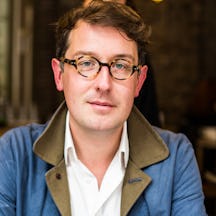The development of modern dentistry has come to represent a great deal more than physical health. This extract from Richard Barnett’s book ‘The Smile Stealers’ prises open the cultural, moral and psychological significance of a sparkling white smile.
You know the drill
Richard Barnettaverage reading time 6 minutes
- Book extract
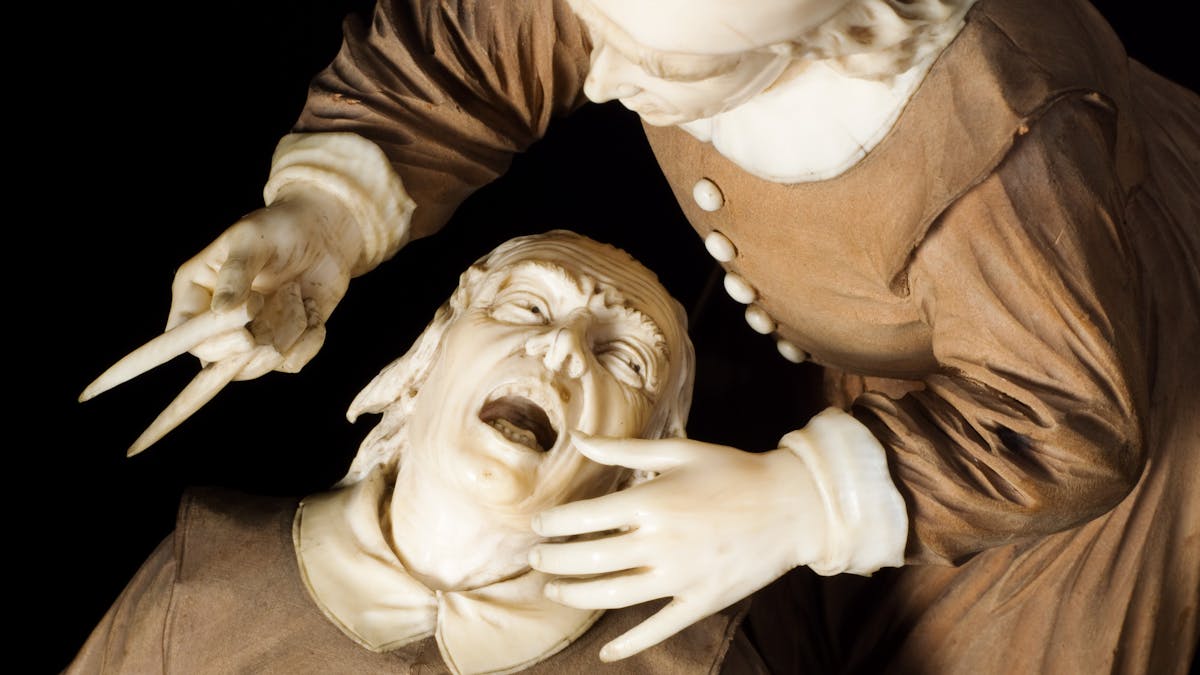
If Marcel Duchamp had been asked to choose a readymade example to represent the tree in Samuel Beckett’s ‘Waiting For Godot’ (1952), he could hardly have done better than the Ritter Tri-Dent dental station.
This spindly tangle of glass and porcelain and rust-spotted chrome, manufactured in the early 1920s, stands on a low plinth in the Reading Room of Wellcome Collection in London. Limbs and branches grow out of a chunky stem like a pollarded oak, painted to resemble polished wood. One holds a platter for tools and materials, another a spittoon, a third an adjustable spotlight and a lamp with four glass globes – but most visitors’ eyes are drawn to the drill.
Strung with ropes running from an electric motor in its base, this articulated armature of fine steel tubes might be a prototype Anglepoise lamp or a steampunk prosthesis.
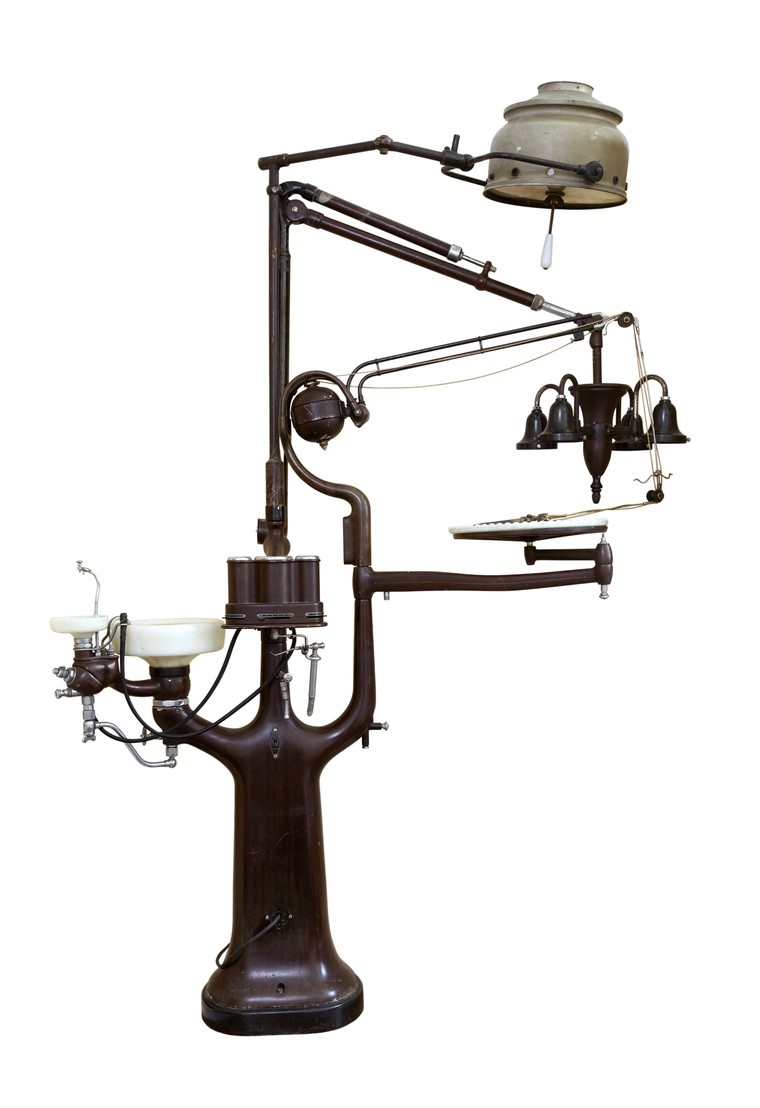
The Tri-Dent dental station, complete high-speed electric drill, directional light and fountain spittoon.
As I look at it, as I walk around it, this remarkable object evokes two kinds of responses. Thinking as a historian, I find the Tri-Dent speaks of a particular moment in the history of medicine: the reinvention of dentistry for the age of mass industry. It encodes new ideas of ergonomic efficiency and, like the industrial assembly lines invented by the previous generation, it turns its human participants into components of a larger machine.
The electric drill and electric lights remind us that this new dentistry was wired into the national power grids of the early 20th century. We can trace the influence of germ theory and aseptic surgery in the white, washable spittoon and tool platter, while the nozzle for anaesthetic gas recalls the 19th century’s great achievement in making dentistry less painful (if not always painless). Together, dentist, patient and dental station became a kind of cyborg, a machine for mass-producing healthy mouths in the era of Hollywood smiles and fluoride toothpaste.
Approaching it as a patient, though, the Tri-Dent provokes a completely different set of feelings: anxiety, apprehension, a deep and intimate kind of body horror. I remember the rubber-gloved fingers probing my cheeks and gums, the sudden heat of a polishing brush on my molars, the jagged scratching of a dental pick against plaque and, more than anything, the ominous whine of a high-speed drill. When we talk about these sensations, we say they go right through you – a revealingly physical image for what we worry about when we sit in the dentist’s waiting room.
In this sense, the Tri-Dent embodies a profound paradox in our attitudes to looking after our teeth. Ask anyone to list the markers of medical progress, and the odds are that modern dentistry will be high on their list. Ask the same person to name the most unsettling moments in 20th-century cinema, and they are likely to recall the notorious scene from ‘Marathon Man’ (1976) in which Laurence Olivier straps Dustin Hoffman into a dental chair and tries to extract a confession with a pick and a drill.
In pictures
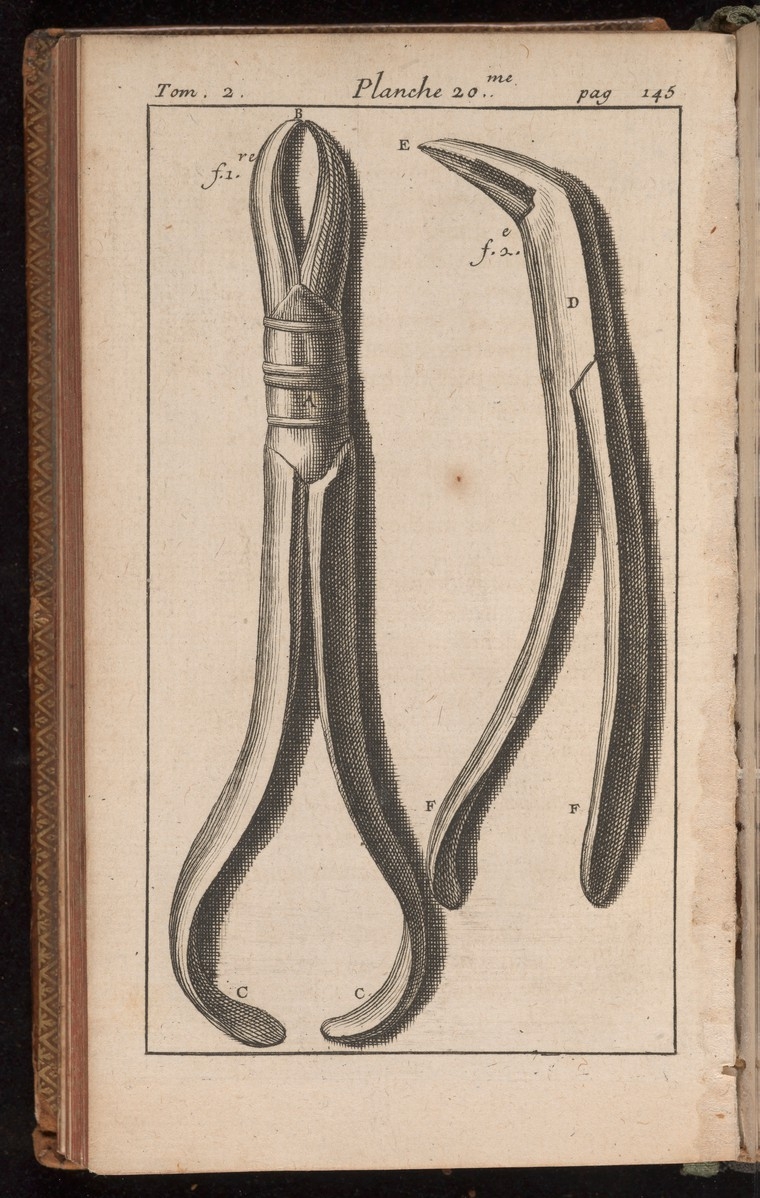
A pair of dental forceps from a book by Parisian dentiste Pierre Fauchard.
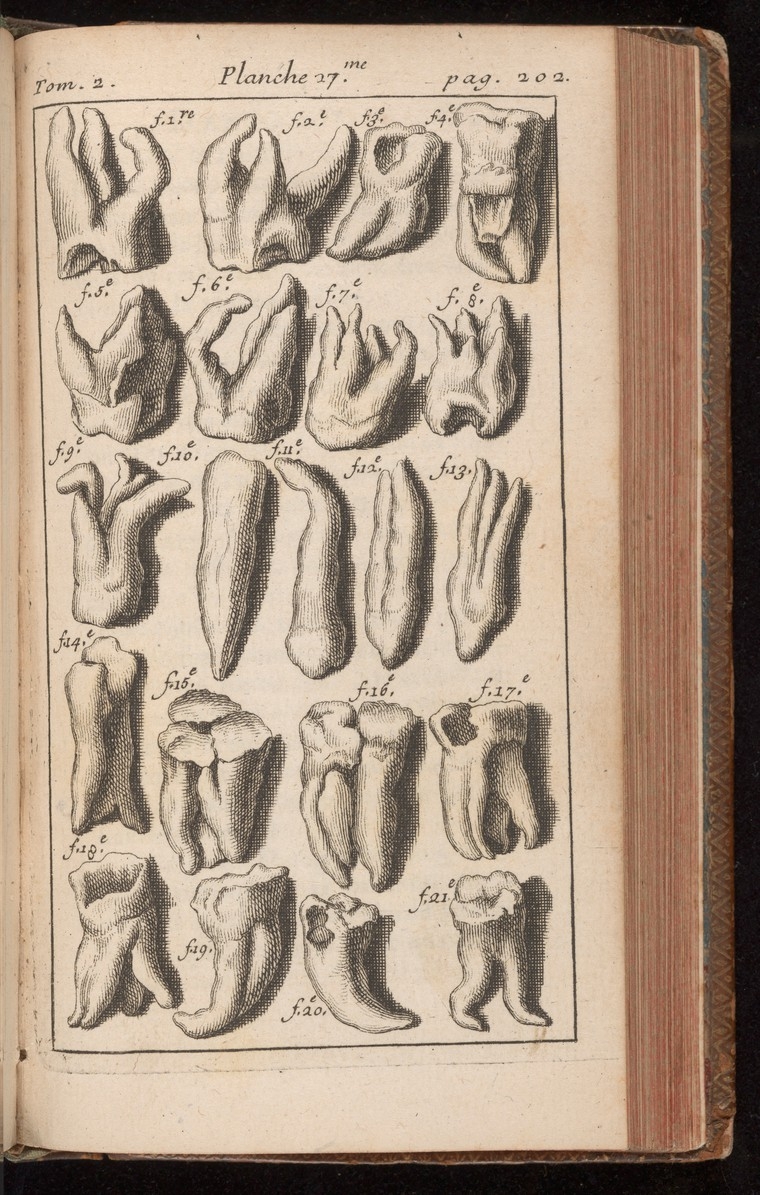
From the same book, this plate shows a series of teeth and their roots.
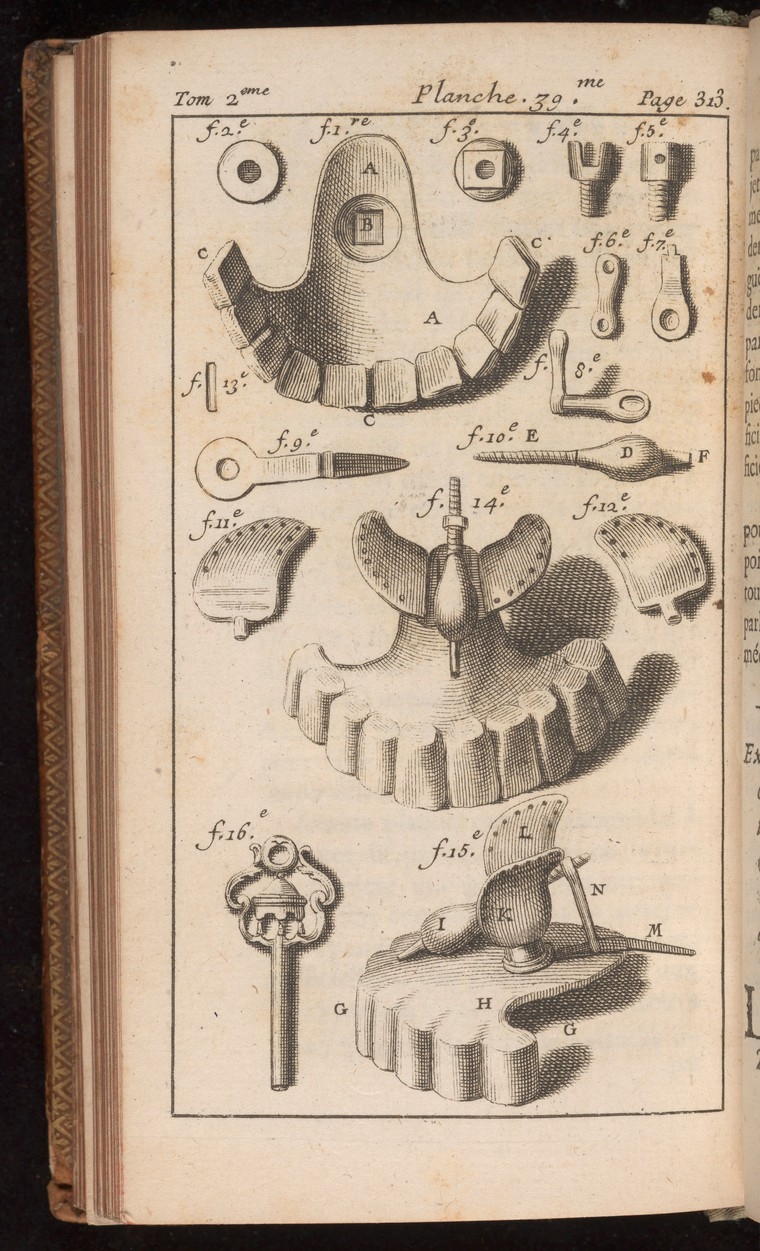
This illustration from Fauchard’s book shows tools used to make dental prosthetics.

This so-called ‘dental pelican’ was used for extracting teeth.
Societies in most times and places have had specialists to maintain, repair, extract and replace bad teeth – but to call this disparate collection of practitioners ‘dentists’ is to miss the very particular history and meaning of the name. The dentistes who emerged in Paris at the end of the 17th century built a new professional identity around this contradictory mixture of aspiration and fear.
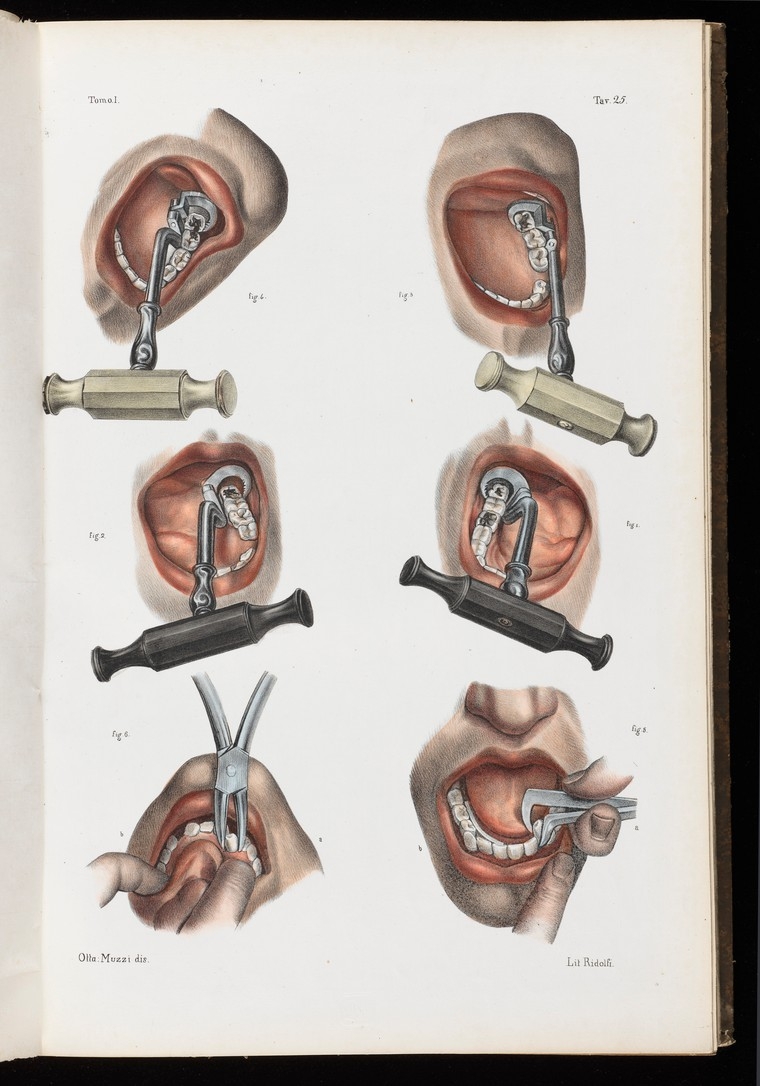
This lithograph shows the extraction of a molar using a wrench, and of a canine tooth using pliers.
Men such as Pierre Fauchard figured themselves as distinctively modern: not only armed with the very latest tools and techniques for creating la bouche orneé, but also attentive to the sensibility and suffering of their well-to-do patients. In doing so, they framed their predecessors as brutal, illiterate swindlers – although the differences between Fauchard, sometimes called the first dentist, and his exact contemporary, Le Grand Thomas – the last of the great Parisian charlatans – were not as clear as either would have wished.
Furthermore, the subsequent story of dentistry, unlike that of surgery, was no meteoric rise to status and success. European and American dentists spent much of the 19th and 20th centuries embroiled in a series of arguments over their position within (or outside) medicine and their troublesome relationship with the state.
In his ‘Physiognomische Fragmente zur Beförderung der Menschenkenntnis und Menschenliebe’ (‘Physiognomic Fragments for Furthering the Knowledge and Love of Man’), published between 1775 and 1778, the Swiss physiognomist Johann Kaspar Lavater insisted that “clean, white and well-arranged teeth… [show] a sweet and polished mind and a good and honest heart”, while rotten or misaligned teeth reveal “either sickness or else some melange of moral imperfection”.
Whatever we think of his notion that one can read human character directly from the face, Lavater reminds us that dentistry has never been only about teeth. Possession of a functional, pain-free mouth is a practical necessity – we all must breathe and eat and talk – but it is also central to our sense of self. Pain in the head can seem unbearably close to the core of who we are, and stinking breath or black teeth carry a stigma that is both peculiarly personal and entirely public.
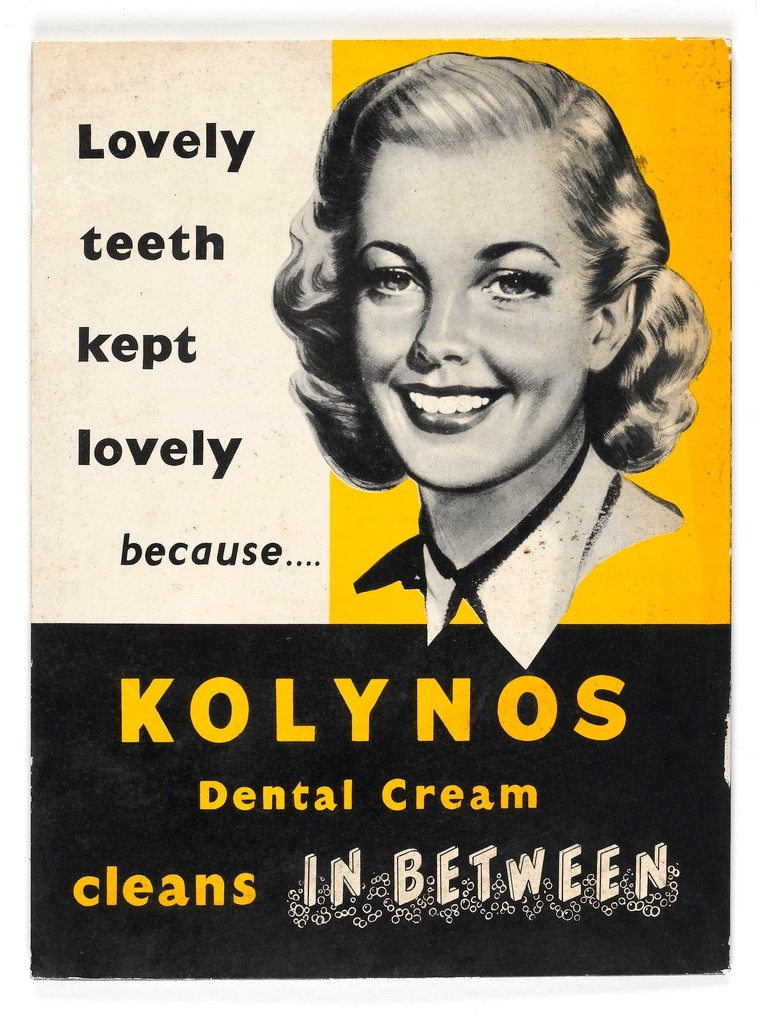
An advert for dental cream from the 1940s. Dentistry has always been about aesthetics as much as functionality.
Dental treatment has always been cosmetic, concerned with aesthetics as much as function – but in contemporary consumer culture, Lavater has had the last laugh. A booklet published in 2000 by the American Association of Orthodontists claims that straightened teeth represent “a highly visible commitment to self-improvement” and “tangible proof that mom and dad are doing right by the kids”, expressing “the beauty of conformity” and “the beauty of achievement”.
This 21st-century version of la bouche orneé is a world away from the experiences of most of our ancestors, their teeth worn down by millstone grit in bread or eroded by cheap sugar.
Writers and artists from Dante Alighieri to Francis Bacon have taken the gaping, screaming, jagged-toothed mouth as an emblem of the most profound human suffering. In the words of the Russian critic Mikhail Bakhtin:
“…For the grotesque the most important part of the entire face is the mouth. It dominates all. A grotesque face can basically be reduced to a gaping mouth and all the rest serves merely as a frame for this mouth, for this bodily abyss that gapes wide and swallows.”
‘The Smile Stealers’ is out now.
About the contributors
Richard Barnett
Richard Barnett is a writer, teacher and broadcaster on the cultural history of science and medicine. He is Director of Studies in History for the Pembroke-King’s Programme at the University of Cambridge, and honorary research fellow at UCL.
